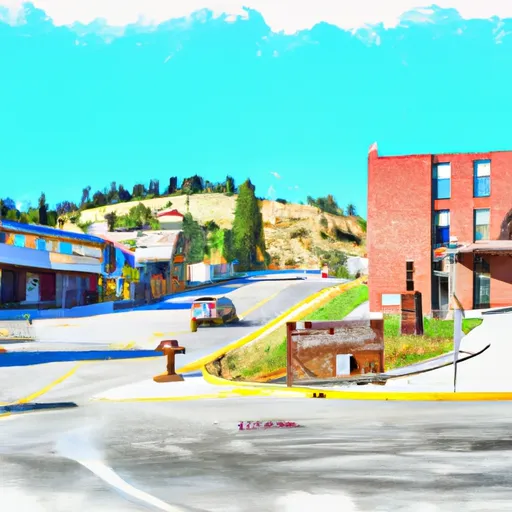-
 Snoflo Premium
Snoflo Premium
Get unlimited access to all our content
With no Ad interruptions! - Start Your Free Trial Login with existing account
Milltown
Eden Index
Climate
7.4
•
Recreation
6.4
•
Community
1.9
•
Safeguard
5.7/10

Milltown, Montana is a small town situated in Missoula County, in the western part of the state. The town experiences a semi-arid climate characterized by hot summers and cold winters. Summers are mild, with average temperatures ranging from the mid-70s to low 80s Fahrenheit, while winters are cold, with average temperatures ranging from the low 20s to mid-30s Fahrenheit. Milltown receives moderate precipitation throughout the year, with snowfall occurring during the winter months.
Located near the confluence of the Clark Fork River and Blackfoot River, Milltown boasts rich hydrology constituents. The rivers provide opportunities for various water activities such as fishing, boating, and rafting. Fishing enthusiasts can expect to catch trout, whitefish, and other species in these pristine waters. The area also offers scenic hiking and biking trails, allowing visitors to explore the natural beauty of the surrounding mountains and forests. In addition, Milltown is home to a charming community park that features picnic areas, playgrounds, and sports fields for outdoor recreation.
Overall, Milltown, Montana provides a picturesque setting with diverse outdoor recreational opportunities, making it an appealing destination for nature lovers and adventure seekers alike.
What is the Eden Index?
The Snoflo Eden Index serves as a comprehensive rating system for regions, evaluating their desirability through a holistic assessment of climate health, outdoor recreation opportunities, and natural disaster risk, acknowledging the profound impact of these factors on livability and well-being.
Climate Health Indicator (CHI): 7.4
Milltown receives approximately
473mm of rain per year,
with humidity levels near 77%
and air temperatures averaging around
7°C.
Milltown has a plant hardyness factor of
5, meaning
plants and agriculture in this region thrive during a short period during spring and early summer. Most
plants will die off during the colder winter months.
By considering the ideal temperature range, reliable water supplies, clean air, and stable seasonal rain or snowpacks, the Climate Health Indicator (CHI) underscores the significance of a healthy climate as the foundation for quality living.
A healthy climate is paramount for ensuring a high quality of life and livability in a region, fostering both physical well-being and environmental harmony. This can be characterized by ideal temperatures, reliable access to water supplies, clean air, and consistent seasonal rain or snowpacks.
Weather Forecast
Streamflow Conditions
Pend Oreille
Area Rivers
Pend Oreille
Snowpack Depths
Pend Oreille
Reservoir Storage Capacity
Pend Oreille
Groundwater Levels
Recreational Opportunity Index (ROI): 6.4
The Recreational Opportunity Index (ROI) recognizes the value of outdoor recreational options, such as parks, hiking trails, camping sites, and fishing spots, while acknowledging that climate plays a pivotal role in ensuring the comfort and consistency of these experiences.
Access to outdoor recreational opportunities, encompassing activities such as parks, hiking, camping, and fishing, is crucial for overall well-being, and the climate plays a pivotal role in enabling and enhancing these experiences, ensuring that individuals can engage in nature-based activities comfortably and consistently.
Camping Areas
| Campground | Campsites | Reservations | Toilets | Showers | Elevation |
|---|---|---|---|---|---|
| Chief Looking Glass FAS | 17 | 3,187 ft | |||
| Siria | 4 | 4,475 ft | |||
| Dalles | 10 | 4,064 ft | |||
| Bitterroot Flat | 15 | 4,308 ft | |||
| Lindbergh Lake | 22 | 4,392 ft | |||
| Norton | 13 | 3,906 ft | |||
| Johnsrud Park FAS | None | 3,443 ft | |||
| Harrys Flat | 18 | 4,104 ft |
Nearby Fishing
Nearby Ski Areas
Catastrophe Safeguard Index (CSI):
The Catastrophe Safeguard Index (CSI) recognizes that natural disaster risk, encompassing floods, fires, hurricanes, and tornadoes, can drastically affect safety and the overall appeal of an area.
The level of natural disaster risk in a region significantly affects safety and the overall livability, with climate change amplifying these risks by potentially increasing the frequency and intensity of events like floods, fires, hurricanes, and tornadoes, thereby posing substantial challenges to community resilience and well-being.
Community Resilience Indicator (CRI): 1.9
The Community Resilience Indicator (CRI) recognizes that education, healthcare, and socioeconomics are crucial to the well-being of a region. The CRI acknowledges the profound impact of these elements on residents' overall quality of life. By evaluating educational resources, healthcare accessibility, and economic inclusivity, the index captures the essential aspects that contribute to a thriving community, fostering resident satisfaction, equity, and social cohesion.

